Where to find us
Amidst the Priorat region, just off the road to Cornudella de Monstant stands El Molí del Pont, in middle of nature, on the ridge of the Siurana river, at the foot of the Montsant mountain range. It’s Cornudella’s old 15th century water mill which produced flour for the region.
It has been restored to the highest standards, to give our guests all they might need in an enchanting surrounding whether they visit us just for pleasure, for climbing, for trekking, canoeing… (links a otras páginas del web)
You can visit the remains of Siurana Historical site, a ten minute drive from El Molí del Pont or go kayaking in the Siurana reservoir just under the village, stroll around the area or take one of the more than 200 climbing routes.
If sight seeing is your choice then all the Montsant mountain range and the Natural Park is open for you and you can enjoy the Priorat Hermitages; specially the Carthusian Monastery of Scaladei and the Bellmunt Mining Museum.
For those who have a taste for wine, El Molí del Pont is in middle of the Priorat wine production region. Wine culture is of major importance for the region.
Riding
Mountain Bike routes
Priorat hermitages
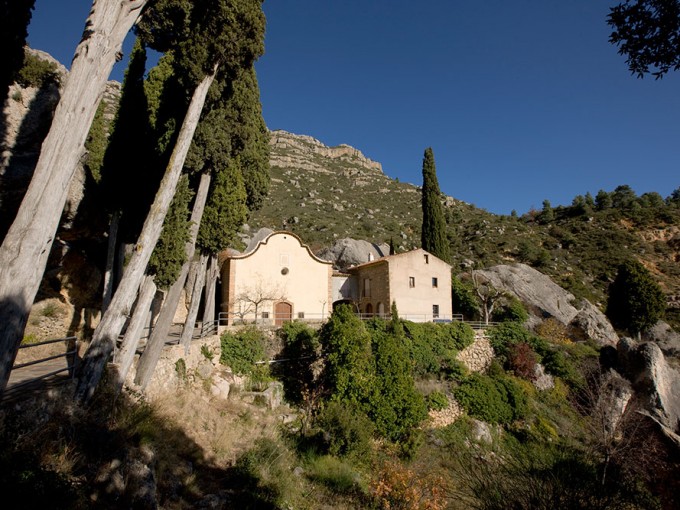
The Priorat has a long hermitage tradition and today you can still visit 16 hermitage locations in the region, each more beautiful than the preceeding one. Most of these sites can be accessed by car.
Bellmunt del Priorat mining museum
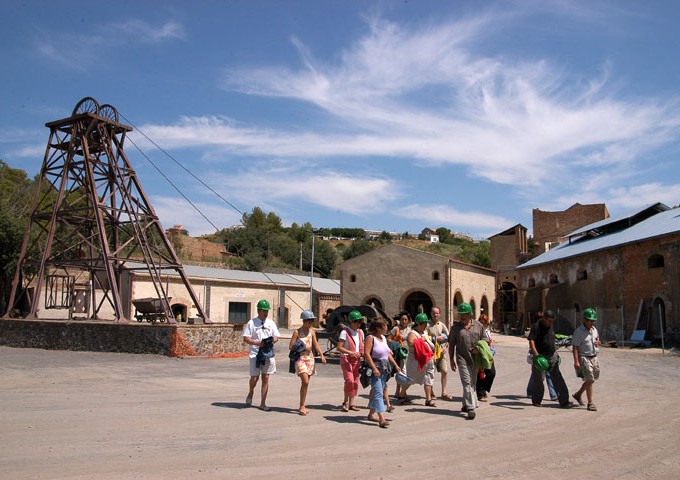
The mineral galena was the object of exploitation.
The Eugenia lead mine dates from the late 19th century and active until 1972 is now a museum where visitors can take a guided tour of the first underground floor galleries although the mine comprises 20 subterranean levels.
See www.minesbellmunt.com for more information.
Charterhouse of Escaladei, Carthusian Monastery (The stairway to heaven), Porrera, Albarca
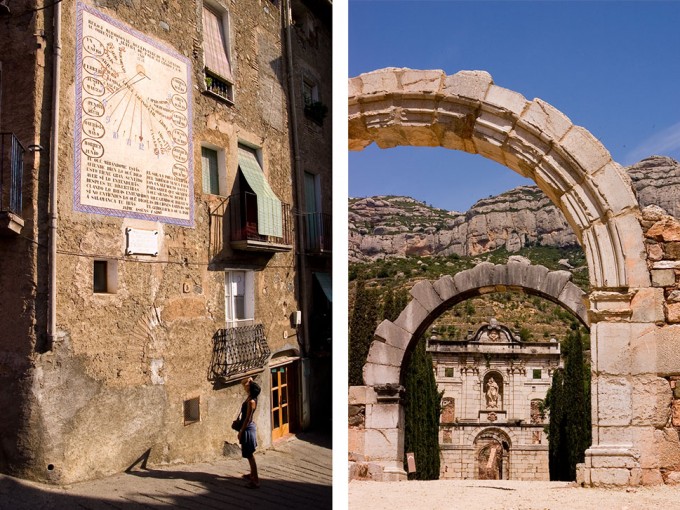
The Charterhouse of Scala or Scaladei islocated at the foot of the Sierra de Montsant in the village of Escaladei, municipality of La Morera de Montsant . The monastery , declared a national cultural interest, dating from the twelfth century is the first order of San Bruno on the Iberian Peninsula . It underwent successive renovations until the eighteenth century in which there were three cloisters and up to 30 cells. It was a center of religious interest and had an important school of painting headed by Joaquin Juncosa. The current name of the region, El Priorat, comes from the existence of this monastery. In1835, after being expropriated by the state it was abandoned and this resulted in the destruction of the whole.
Today, you can visit the ruins in which you can see the Baroque portal of the Mother of God, the church and a reconstructed cell with furniture and utensils from the monastic life so as to imagine how the Carthusian monks lived.
Climbing at Siurana
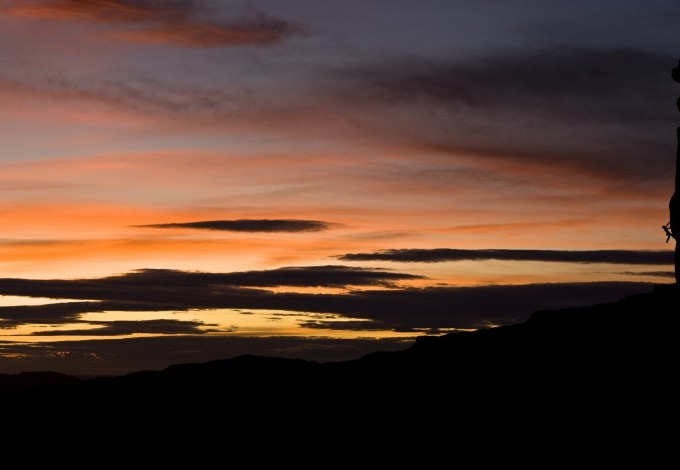
For almost all climbers Siurana represents much more than just a small village lost in time perched on a cliff’s edge in the mountain range of Prades. It embodies a true vertical eldorado, a series of steep yellow and grey limestone walls, slabs and overhangs which together form one of the most famous crags in Spain.
Siurana has attracted climbers non-stop to its 200+ routes for decades. The style of climbing varies considerably, and although most routes are pocketed stamina climbs, there are plenty of short and intense lines to get to grips with. The grades vary from 5a to 9a+. Talking about 9a+: Siurana is home to the famous “La Rambla”, the extraordinary reference route first climbed to 3/4 height by German Alexander Huber in 1994, then extended by Ramón Julián Puigblanque in 2003.
Not all is top-end climbing as there are more than 100 routes up to French 7a and in the surrounding area, a vast choice of other world-class crags such as Margalef, Montsant and Arboli to name but three.
See Rock Climbing Routes in Siurana, Catalunya | Rockclimbing.com or PlanetMountain.com for more information
Wine culture
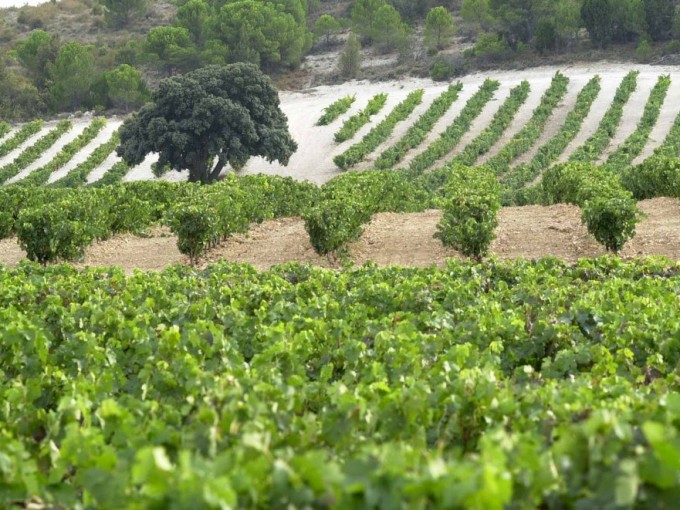
The first recorded evidence of grape growing and wine production dates from the 12th century, when the monks from the Carthusian Monastery of Scala Dei, founded in 1194, introduced the art of viticulture in the area. The monks tended the vineyards for centuries until 1835 when they were expropriated by the state, and distributed to smallholders.
The region is home to two unique wine varieties.
Priorat DOQ
It is one of the only two wine regions in Spain to qualify as DOCa, the highest qualification level for a wine region according to Spanish wine regulations, alongside Rioja DOCa.
It primarly produces a powerful red wine, wine of low yield and high alcohol potential due to the climate and unique terroir of black slate and quartz soil known as licorella. The native varieties of Garnatxa and Carinena have been tamed by a new wave of skilled wine makers back into business as from tha 1980s after the Philoxera plage at the beginning of the 1900s which meant the decline of the region until then.
Montstant DO (early 2000)
The vineyards at an average height of about 360m above sea level extend along the mountainsides among olive groves, forests and rocky outcrops.
The main style of Montsant is powerful red wines, which can be similar to the wines of Priorat when they are made from old vine Garnacha and Cariñena. Production also includes white wines, rosé wines, sweet red wines and rancio style wines made using a solera system.
Montsant mountain range
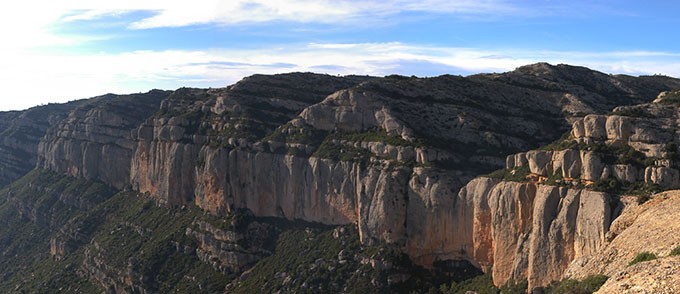
The Montsant mountain range was declared Natural Park in 2002. It is all of a symbol of the Priorat and Tarragona regions and it’s very special conglomeration of rocks is full of spectacular caves, caverns, gorges due to natural phenomena caused by erosion thus being a great place for climbing, trekking or just strolling around.
The area surrounded by the mountain range has it’s own microclimate and is home to a number of raptors, mammals and specific vegetation amongst which vines produce Montsant and Priorat wines which have become DOs.
Some outstanding areas are La Roca Corbatera the highest peak, 1163m or Sant Joan de Codolar, a hermitage between enormous rocks, built by the Carthusians near the end of the XV century.
http://www.costadaurada.info/d1/espaisnatsindex.php?id=16&idm=13
Siurana Historical Site and Area of Outstanding Natural Beauty
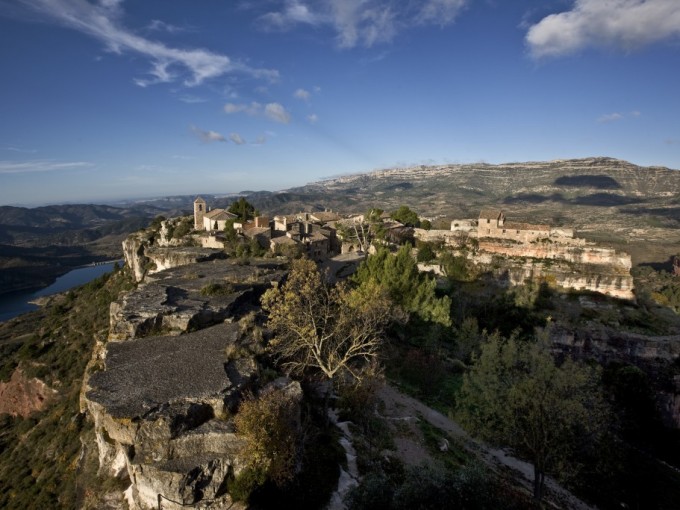
Siurana an enchanting cobbled street hamlet perched on a rock over river Siurana is a great spot from where to enjoy the splendid views of the Montsant mountain range, the Gritella mountain range and the Mountains of Prades. At the foot of the rock is the Siurana reservoir with clean and calm waters.
Today, presiding the entrance of the village visitors can see the remains of it’s Moorish castle If and if they look closely at the surrounding cliffs, the permanent imprint of a horseshoe on the rock is vible as before being overwhelmed by the Christians, the Moorish queen, Abdelazia, preferred to cast herself off the summit with her horse and the animal tried to resist himself from falling and thus left his imprint there.
The most impressive building nowadays in Siurana is the Romanesque church. It was built after Berenguer IV’s troops conquered the village, in order to bring Christianity back to the region. The doorway has been exceptionally well preserved with a figurine tympanum, framed by three rounded archivolts resting on capitels with various decorative motifs.
Siurana Reservoir
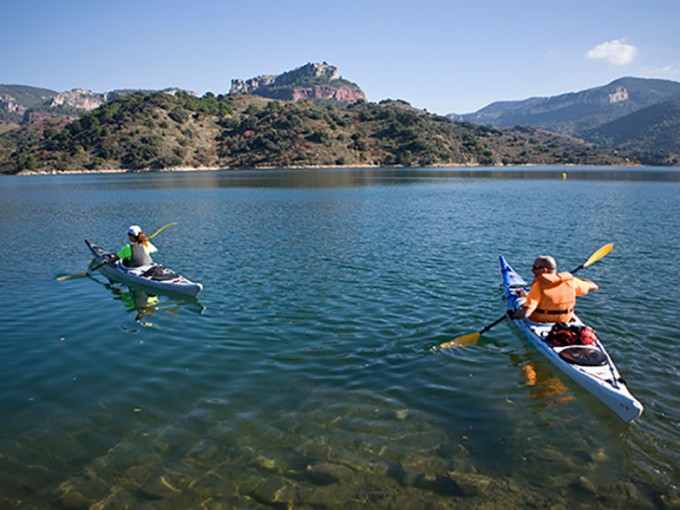
The Siurana reservoir holds the waters coming from river Siurana, the main afluent of the Ebro in the region of Tarragona.
It’s quiet waters are a great place to go kayaking and canoeing.
It is surrounded by the Montsant mountain range and on the peak of a cliff rock where you have lots of well known climbing routes you’ll find the remains of the village of Siurana.
See Rock Climbing Routes in Siurana, Catalunya | Rockclimbing.com or PlanetMountain.com
http://www.exploratgn.cat/en/ezine/activity/kayak-and-canoeing-at-the-siurana-s-reservoir for more information.



